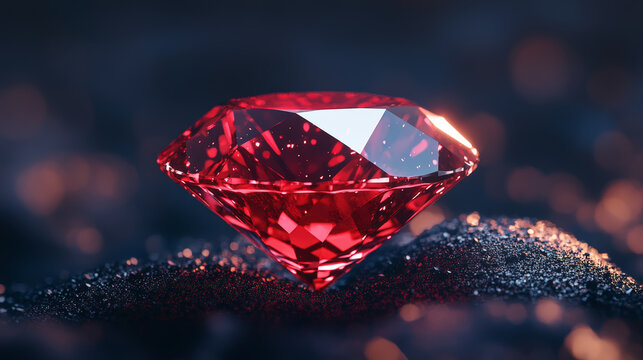Introduction: What Are Blood Diamonds?
When you hear the word “diamond,” what comes to mind? Sparkling beauty, engagement rings, and timeless elegance, right? But hidden beneath this glamour lies a troubling reality: blood diamonds. These gems are more than just stunning stones; they come with a dark history that involves violence, exploitation, and human suffering. So, what exactly are blood diamonds, and why should we care about them? Let’s dive deep into this pressing issue.
Defining Blood Diamonds
Blood diamonds, also known as conflict diamonds, are precious stones mined in war zones and sold to finance armed conflict against governments. The term “blood” signifies the bloodshed associated with their extraction and trade. Essentially, these diamonds fuel violence and human rights abuses, making them far from the romantic symbols we often associate with them.
Historical Context
The history of blood diamonds dates back several decades, but it gained significant attention during the civil wars in Africa, particularly in Sierra Leone during the 1990s. Rebel groups used diamond sales to fund their operations, leading to immense suffering for local populations. This dark chapter opened the world’s eyes to the hidden costs of diamond mining and prompted global discussions about ethical sourcing.
The Origins of Blood Diamonds
Key Regions Affected
While blood diamonds can originate from various countries, several key regions have become infamous for their role in the trade. Countries like Sierra Leone, Angola, and the Democratic Republic of the Congo have experienced significant conflict driven by diamond mining. Here, rebel groups have often taken control of diamond-rich areas, using violence to maintain their grip on power.
The Role of Rebel Groups
In many cases, rebel groups resort to brutal tactics to mine diamonds, employing child labor and committing atrocities against local communities. The revenue generated from these operations often goes directly into weapons and military operations, perpetuating a cycle of violence. Understanding this aspect is crucial for consumers who wish to make informed choices about their diamond purchases.
The Impact of Blood Diamonds
Human Rights Violations
The human cost of blood diamonds is staggering. Reports of forced labor, child exploitation, and human trafficking are rampant in conflict zones. People are often subjected to harsh working conditions, violence, and even death. The sale of blood diamonds perpetuates a cycle of poverty and suffering, affecting entire communities.
Environmental Concerns
Beyond human rights issues, the extraction of blood diamonds poses severe environmental risks. Mining operations can lead to deforestation, soil erosion, and water contamination. The push for profits often results in neglect of sustainable practices, leaving a scar on the landscape that lasts long after the diamonds are extracted.
The Kimberley Process: A Double-Edged Sword
What Is the Kimberley Process?
In response to the growing awareness of blood diamonds, the international community established the Kimberley Process Certification Scheme in 2003. This initiative aims to prevent the trade of conflict diamonds by requiring countries to certify that their diamonds are conflict-free. While it sounds promising, the effectiveness of the Kimberley Process is hotly debated.
Effectiveness and Criticisms
Critics argue that the Kimberley Process has significant loopholes, allowing conflict diamonds to slip through the cracks. Inadequate enforcement and the lack of stringent criteria mean that diamonds labeled as “conflict-free” can still have connections to violence. Furthermore, some countries have failed to participate fully, undermining the initiative’s goals.
Alternatives to Blood Diamonds
Ethically Sourced Diamonds
Fortunately, there are alternatives to blood diamonds. Many jewelers now offer ethically sourced diamonds, which are mined under fair labor conditions and in compliance with environmental regulations. These lab made diamonds support local communities and contribute to positive social change, allowing consumers to enjoy their sparkle without guilt.
Lab-Grown Diamonds
Another growing alternative is lab-grown diamonds. Created using advanced technology, these diamonds are chemically identical to natural diamonds but are produced in controlled environments. Lab-grown diamonds eliminate the risks associated with conflict sourcing and are often more affordable, making them an attractive option for conscientious consumers.
How to Identify Blood Diamonds
Signs of Conflict Sourcing
If you’re in the market for a diamond, being informed is your best defense against inadvertently purchasing a blood diamond. Look for signs that might indicate a diamond’s conflict origins, such as vague sourcing information or reluctance from the seller to provide details about the stone’s origins.
Asking the Right Questions
Don’t hesitate to ask your jeweler about the diamond’s certification and sourcing practices. Questions like, “Can you provide information about where this diamond was mined?” or “Is it certified by the Kimberley Process?” can help you gauge whether the diamond is ethically sourced.
Consumer Responsibility
Making Informed Choices
As consumers, we hold significant power. Our purchasing decisions can directly impact the diamond industry. By opting for ethically sourced or lab-grown diamonds, we can help combat the trade in blood diamonds and support practices that respect human rights.
Supporting Ethical Brands
Many jewelers are now committed to transparency and ethical sourcing. By choosing to buy from these brands, you’re not only making a fashion statement but also standing against exploitation and violence. Supporting ethical brands sends a strong message that consumers demand change in the industry.
The Future of Blood Diamonds
Ongoing Efforts to Combat the Trade
The fight against blood diamonds is far from over. Organizations worldwide are working tirelessly to raise awareness, implement better regulations, and support affected communities. However, it requires collective action from consumers, jewelers, and governments to make a lasting impact.
The Role of Consumers in Change
Ultimately, change starts with us. By being informed and making conscious choices, we can contribute to a future where diamonds symbolize love and commitment, not violence and exploitation. Every purchase is an opportunity to support ethical practices and promote positive change in the industry.
Conclusion: Sparkle with Integrity
As you navigate the world of diamonds, remember that the sparkle shouldn’t come at a cost. Understanding the reality of blood diamonds is crucial for making informed decisions. By choosing ethically sourced or lab-grown diamonds, you can enjoy the beauty of these gems while standing up for human rights and environmental sustainability. Let’s make sure that the love and commitment diamonds symbolize are free from the dark shadows of exploitation. Your choice matters, and together, we can help ensure that every diamond sparkles with integrity.




.jpeg)